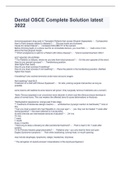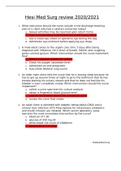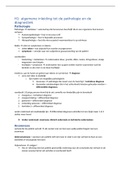I. Game theory
A. What is a game?
B. Dominant and dominated strategy
II. Nash equilibrium
A. simultaneous game
B. Multiple equilibria, pure strategy, mixed strategy, maximin strategy
C. Sequential games
III. Strategic moves, credibility, and commitment
A. Entry deterrence
B. reputation
=> game theory: the study of strategic interactions among two or more economic actors
◦ concerns behavior when several players make decisions knowing their actions affect
others, others’ actions affect them, and they are trying to anticipate the actions of others
◦ These are strategic decisions: actions made based on the anticipation of others’ actions
◦ This applies to real games
◦ three basic categories of games :
◦ simultaneous games --> participants choose their actions at the same time without
knowing their opponents’ strategies
• Bertrand and Cournot models
◦ repeated games: a series in which the players play the same simultaneous game
over and over
• Collusion
◦ sequential games: games where one player moves first and other players observe
this action before making their decisions
• Stackelberg oligopoly
• What is a game?
◦ three common elements for every game :
• Players: economic game who must decide on actions based on the actions
of others
▪ face situations in which outcomes they care about are affected by
both their own choices and the choices of others
▪ Players in economic games
• firms (and their managers), consumers, workers, or
many other entities
• Strategies: player's plan of action for a game
▪ the strategy a player chooses depends on what strategies she thinks
her competitors will use.
, • Payoffs: outcomes the players receive from playing the game
▪ For consumers, the payoff may be measured in terms of utility or
consumer surplus
▪ For firms, payoffs generally represent producer surplus or profits
◦ Dominant and dominated strategy
• optimal strategy: the action that has the highest expected payoff
• Dominant strategy: the best thing for a player to do, a winning strategy for a
player regardless of her opponents' strategies
• Dominated strategy: never the right thing to do, losing strategies for a player
regardless of her opponents' strategies
• payoff matrix: a table that lists the player's strategies and payoff of an economic
game
◦ An advertising game: Warner Brothers and Disney outcomes when advertising or not
• Prisoner's dilemma: even if both agents could make both higher profits if they
agreed not to advertise each had such a strong individual incentive not to respect
the agreement
▪ Advertise --> dominant strategy for both
▪ Don't advertise --> dominated strategy
• Nash equilibrium in simultaneous games
◦ The stable market equilibrium also requires that no firm in the industry wants to
change its decision given the choices its competitors are making
◦ no player wants to unilaterally change her strategy given whatever strategies the
other players are choosing
• That is, the players are all doing the best they can, given the others’
actions
◦ A game can have a Nash Equilibrium even if there are no dominated or dominant
strategies --> NE only requires that the action is the best thing a player can do
given the actions of his opponents
◦ payoff matrix :











